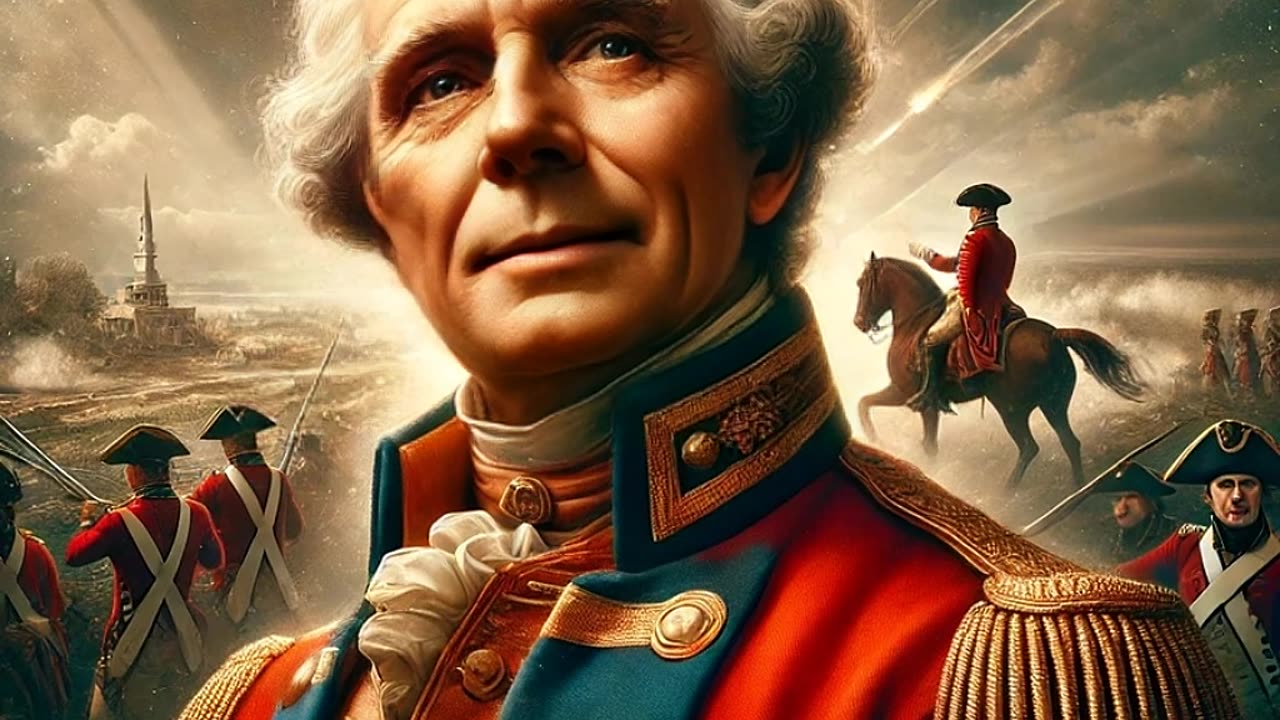Premium Only Content

General Sir Henry Clinton Tells His Story as Commander and Chief of the British Forces
Presented to you by: http://www.HistoricalConquest.com
Read more on our blog at: https://www.historicalconquest.com/blog
My name is General Sir Henry Clinton, and I served as the British commander-in-chief during the American Revolution. I was born in 1730 into a military family, and a life in the army seemed only natural. I followed in my father's footsteps, climbing through the ranks and seeing action in Europe during the Seven Years' War. By the time the American colonies began their uprising against the Crown, I had already established a respectable military career, and I was sent across the Atlantic in 1775 to help put down the rebellion.
When I first arrived in America, the situation was already tense, and battles like Bunker Hill were making it clear that this would not be a quick conflict. I served as a senior officer under General William Howe, and we made several attempts to crush the Continental Army. I played a crucial role in the capture of New York City in 1776, where we pushed George Washington's forces into retreat, and again during the successful campaign to take Philadelphia in 1777. However, even with these victories, we found that suppressing the rebellion was not as straightforward as we had anticipated. The American forces were resilient and had gained valuable allies, such as the French.
In 1778, I was appointed as the commander-in-chief of the British forces in North America, succeeding General Howe. It was a challenging position to take over, as our strategy needed to shift towards holding our positions rather than launching full-scale offensives. I moved our main base from Philadelphia back to New York, fearing the French navy's increasing presence along the coast. From there, I coordinated efforts to keep the colonies under British control, including launching raids and supporting Loyalist uprisings.
One of the most significant moments under my command was the Siege of Charleston in 1780. We launched a campaign into the southern colonies, hoping to rally Loyalist support and weaken the American resistance. The siege was a major success; we captured Charleston, one of the key cities, and took thousands of American troops as prisoners. It seemed like a turning point in the war, but things soon took a turn for the worse.
Despite our efforts in the South, the American forces, now bolstered by French troops and naval support, continued to resist. I found myself at odds with some of my subordinates, including General Cornwallis, over the best strategy to employ. When Cornwallis moved his army to Yorktown, I tried to send reinforcements, but we were outmaneuvered by the French fleet, and the combined American and French forces laid siege to Yorktown. Cornwallis was forced to surrender in 1781, marking the beginning of the end for the British campaign in America.
After Yorktown, I returned to England, where criticism was waiting for me. Many blamed me for the loss of the colonies, though I knew that the war had been fraught with challenges that went beyond any one general's strategy. It was a war not only fought on the battlefield but also in the hearts and minds of the people. Though I had not achieved victory, my role was a reminder of the complex nature of military leadership during a time of revolution.
Visit us at: https://www.historicalconquest.com/marketplace
#historicalconquest #history #historical #ancientamerica #ageofexploration #france #french #iroquois #native #nativeamerican #nativeamericanhistory #british #england #religiouspersecution #expansion #truehistory #settlers #settlement #spain #france #French #Frenchhistory #frenchcolonial #frenchheritage #colonizers #colonizer #FrenchandIndianWar #RevolutionaryWar #AmericanRevolution
-
 0:59
0:59
The Historical Conquest Channel
2 days agoSarah Bagley Tells Her Story of Taking on Big Corporations, Fighting for the 10 Hour Work Day
111 -
 49:57
49:57
The Dan Bongino Show
3 hours agoAnother Phony Narrative Crumbles + First Show In The New Studio! (Ep. 2437) - 03/06/2025
231K853 -
 44:26
44:26
The Rubin Report
2 hours ago'Real Time' Crowd Stunned by Bill Maher’s Unexpected Glaring Blind Spot
5.94K16 -
 LIVE
LIVE
Benny Johnson
1 hour agoDeep State PURGE: CIA Agents STRIPPED of Badges as Trump DISMANTLES Dept of Education | Dem CENSURED
13,831 watching -
 LIVE
LIVE
Grant Stinchfield
47 minutes agoWhat Happened to the Mystery Drones? They Don't Just Disappear, or do They?
1,967 watching -
 LIVE
LIVE
Flyover Conservatives
12 hours agoThe Medical Industry’s Dark Secret—What They Don’t Want Pregnant Women to Know! - Dr. James Thorp | FOC Show
510 watching -
 1:01:32
1:01:32
Standpoint with Gabe Groisman
2 days agoThe War on Israel: Yair Netanyahu Tells All
16.6K2 -
 2:10:19
2:10:19
Steven Crowder
3 hours agoTrump Loves Dictators: Debunking the Left’s Latest Attack Strategy
204K180 -
 1:03:38
1:03:38
Timcast
2 hours agoTrump Eyes CRIMINAL CHARGES For USAID Staff For FRAUD, SCOTUS Under Fire Over Ruling On $2B Payments
62.1K38 -
 LIVE
LIVE
LFA TV
16 hours agoBYE, BYE OBAMA AND BLM! | LIVE FROM AMERICA 3.6.25 11AM
5,714 watching